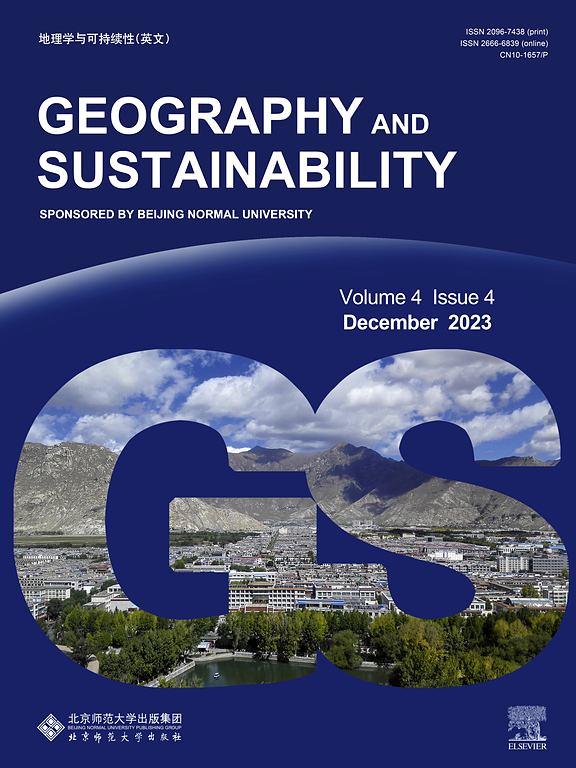Spatiotemporal heterogeneity management: Optimizing the critical role of ecosystem services in achieving Sustainable Development Goals
IF 8
1区 环境科学与生态学
Q1 GEOGRAPHY, PHYSICAL
引用次数: 0
Abstract
Ecosystems play a pivotal role in advancing Sustainable Development Goals (SDGs) by providing indispensable and resilient ecosystem services (ESs). However, the limited analysis of spatiotemporal heterogeneity often restricts the recognition of ESs’ roles in attaining SDGs and landscape planning. We selected 183 counties in the Sichuan Province as the study area and mapped 10 SDGs and 7 ESs from 2000 to 2020. We used correlation analysis, principal component analysis, Geographically and Temporally Weighted Regression model, and self-organizing maps to reveal the spatiotemporal heterogeneity of the impacts of the bundle of ESs on the SDGs and to develop spatial planning and management strategies. The results showed that (1) SDGs were improved in all counties, with SDG 1 (No Poverty) and SDG 3 (Good Health and Well-being) exhibiting poor performance. Western Sichuan demonstrated stronger performance in environment-related SDGs in the Sichuan Province, while the Sichuan Basin showed better progress in socio-economic-related SDGs; (2) habitat quality, carbon sequestration, air pollution removal, and soil retention significantly influenced the development of 9 SDGs; (3) supporting, regulating, and provisioning service bundles have persistent and stable spatiotemporal heterogeneity effects on SDG1, SDG8, SDG11, SDG13, and SDG15. These findings substantiate the need for integrated management of multiple ESs and facilitate the regional achievement of SDGs in geographically intricate areas.

求助全文
约1分钟内获得全文
求助全文
来源期刊

Geography and Sustainability
Social Sciences-Geography, Planning and Development
CiteScore
16.70
自引率
3.10%
发文量
32
审稿时长
41 days
期刊介绍:
Geography and Sustainability serves as a central hub for interdisciplinary research and education aimed at promoting sustainable development from an integrated geography perspective. By bridging natural and human sciences, the journal fosters broader analysis and innovative thinking on global and regional sustainability issues.
Geography and Sustainability welcomes original, high-quality research articles, review articles, short communications, technical comments, perspective articles and editorials on the following themes:
Geographical Processes: Interactions with and between water, soil, atmosphere and the biosphere and their spatio-temporal variations;
Human-Environmental Systems: Interactions between humans and the environment, resilience of socio-ecological systems and vulnerability;
Ecosystem Services and Human Wellbeing: Ecosystem structure, processes, services and their linkages with human wellbeing;
Sustainable Development: Theory, practice and critical challenges in sustainable development.
 求助内容:
求助内容: 应助结果提醒方式:
应助结果提醒方式:


